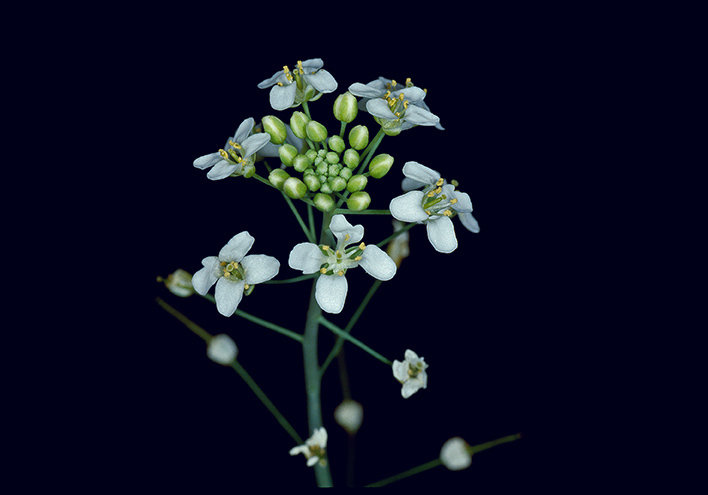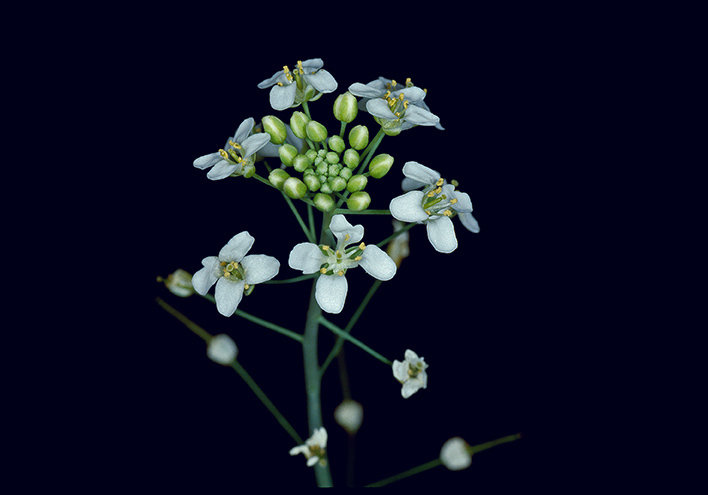Sugar influences the onset of flowering
Only when light, age and energy conditions are right do plants flower
A plant can reproduce successfully only if it flowers at the appropriate time. Therefore, a complex network of photoreceptors and other proteins has evolved to monitor environmental conditions such as light and temperature. It has long been thought that plants must also ensure that they have sufficient resources for the energy intensive process of building flowers. As scientists from the Max Planck Institute of Molecular Plant Physiology in Potsdam and the Max Planck Institute for Developmental Biology in Tübingen now report, the sugar molecule trehalose-6-phosphate (T6P) takes on a key role in monitoring energy reserves in thale cress, Arabidopsis thaliana, thereby controlling flowering time in relation to energy reserves.

Day length is critical for regulating flowering time in a wide range of species. Some plants need long days and thus flower in summer, while others need short days and accordingly flower in spring or autumn. When the appropriate day length is perceived in leaves, an interplay of photoreceptors and other proteins leads to expression of the FLOWERING LOCUS T (FT) gene. The FT protein then migrates to the tip of the shoot, where it triggers the formation of flowers instead of leaves.
However, once it reaches a certain age, thale cress produces flowers independently of day length. This safety mechanism is controlled by a specific microRNA, serving as a redundant pathway ensuring eventual flowering.
In addition to light and age, the energy status is also thought to have an influence on flowering time. The formation of flowers is an energy-intensive process, and this energy must be available to the plant in the form of sugar. How sugar molecules might help determine the onset of flowering has long been unknown. Now researchers from the Max Planck Institute of Molecular Plant Physiology and the Max Planck Institute for Developmental Biology report that the sugar molecule T6P influences both signalling pathways described above.
"Since plants contain only minute amounts of T6P, it has been suspected that it could be a signalling molecule", explains Vanessa Wahl, lead author of the paper. "However, until now nobody knew how T6P interacted with the complex genetic network that regulates the onset of flowering." By blocking the production of T6P, Wahl and her colleagues could delay flowering and in extreme cases stop it altogether. This held true even when the plants were grown under highly inductive conditions. "We were able to show that this sugar is indispensable for the production of the FT protein in the leaves", adds corresponding author Markus Schmid, "and, as we know, flowering without FT is greatly delayed."
In addition, T6P influences both the production of the age pathway microRNA and the expression of its target genes. This means that this sugar molecule regulates two of the most important pathways that control the onset of flowering.
"Even though it was clear that the plant had to check its energy levels before flowering started, there was no explanation about how that could work at the molecular level", Vanessa Wahl describes. In revealing the molecular links between flowering time and sugar status, this stands as an important contribution to our understanding of the complex network that regulates flowering.
CSt/HR
